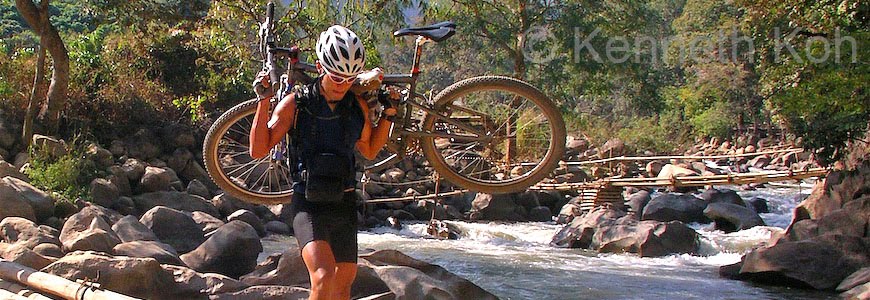1. Research
Do your homework. Take a look at some travel magazines and scour the internet's photography sites (like Flickr) for ideas and images that others have brought back from those places.
| Woman at the Bazaar in Jodhpur, Rajasthan, India. Nikon D300, 18-200mm lens. While scouring the internet for ideas on Rajasthan, I came across Manny Librodo's Rajasthan photos on pbase. I was blown away by his images. This image is one of many that I shot with inspiration from Manny Librodo. |
2. Shot List
Get a shot list. Get a small notebook and write down your ideas for the types of shots you would like to make in the form of a list. You can do it early while doing your research or do it on the plane, but get it done ahead of time. It's hard to show up at a place and start taking great shots without having some idea of the shots you'd like to make. For example, on a mountaineering trip, I might jot down something like:
- Preparation: Close up of map, reading guide book, etc.
- Packing up: motion blur shot of packing, stuff all over the floor, etc
- Airport: departure, weighing scale, signboard of airport, etc
- Vehicle: loading up, dust as jeep pulls away, etc
- Details: close up of hands, chalking up, racked up gear, altimeter, etc.
- Portraits: headshots of guide, local at work, local in a bazaar, etc
- POV: shoot low - include wildflowers, etc
- Etc...
3. POV
This means Point of View, or otherwise getting some unusual angles. Shoot from near the ground to get some wildflowers in the foreground, or stand up on a rock and hold your camera up high and shoot down with an ultrawide.
| Mountain Biking in Chiang Mai, Northern Thailand. This POV shot was made with a DSLR bungeed to my chest and the shutter activated with the self-timer. |
4. Be Efficient
Keep your camera handy, take it out on the move and only stop when you're actually taking the shot. When you do stop, cover a lot of angles, continue to shoot even when you're subject passes you. For example, I may drop to my knees to shoot my subject as he approaches me, when he gets closer, I may lie prone on the ground to get a low angle shot as he goes by, and then when he passes, I'll continue to shoot, maybe running up behind him to get a POV shot at waist level with a lower shutter speed for some motion blur. When you're done, stow your camera on the move.
5. Shoot Early in the Day
Golden hour. You've heard that the light is best one hour from sunrise (and sunset). That's one reason to shoot early. The other reason to shoot early is that you've still got the energy and mental capacity to compose your shots. Whatever happens during the rest of the day, you'll know that at least you have those early shots in the bag.
6. Know Your Camera
Ideally, you'll have some time to spend with your camera before a big trip. I like to learn how my camera meters a scene, so I know how it is going to expose for a shot. I'll leave my meter in Matrix Metering (or evaluative or multi-segment metering), and control exposure with the exposure compensation button. I've developed a feel for how my camera meters a scene, and I set exposure compensation based on how I feel I want the shot to look. For example, silhouettes: -2EV; backlit or bright and airy: + 2/3EV. It's not science, but it's quick and gets me in the ballpark where I can work it a bit more in post-process. If this confuses you, skip to step 7 ;o)
7. Know Your Limits
I shoot most of the time in Aperture Priority Mode, and occasionally in Shutter Priority. But when I'm occupied with other aspects of the expedition or race, I set my camera to 'P' Program Mode and keep on shooting. When I get really tired, confused and start making mistakes, I put the camera away.
8. Preset Your Camera Modes
When I really need to work fast, as when I'm racing, I'll preset the camera modes so that when I make a mode selection, I'll be ready for those variables that I've set. For example, in a bike race, I'll set up Aperture Priority Mode on the lens's largest aperture, so if I switch it to Aperture Priority, I'll know that I've got the largest aperture, which not only gives me the fastest shutter speed, but also shallower depth of field. If I switch it to Shutter Priority, I've got it set it at 1/30, and I'm ready for a motion blurring or panning shot. Otherwise, I'll just leave it in 'P' Mode.
9. Bring a Camera
I know this sounds obvious, but sometimes I'll leave my camera behind if I think an adventure will be too hazardous, or I think I won't be able to take any photos. These days, there are plenty of rugged, waterproof cameras or housings that will allow you to take your camera just about anywhere, and mounts that will allow you to shoot hands free video from a helmet, chest or bike handlebars.
| A rugged, waterproof housing will allow you to take your camera just about anywhere. |
10. Shoot RAW
This point alone is worth a whole post. So I'll end with this and hope to see you back for the next installment:

No comments:
Post a Comment